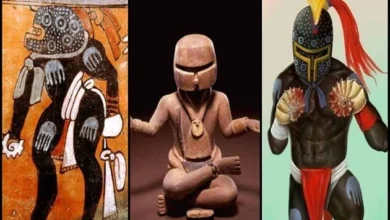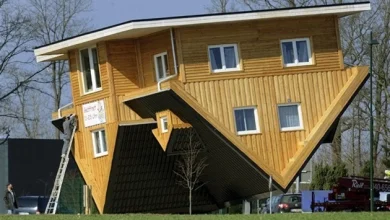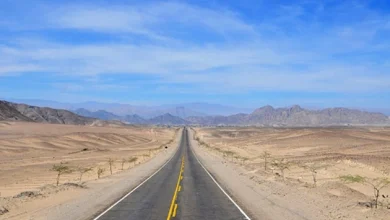Place where gods live: mystery of ancient “ghost town” of Teotihuacan

More than two thousand years old, the mysterious Teotihuacan can rival such great cities of its time as Rome, Athens, and Alexandria. It was the heart of a grand empire. The Aztecs discovered the ancient abandoned city in the 14th century. They thought giants, so majestic built the town, was it. The Aztecs called it Teotihuacan – the place where the gods touched the earth. Who laid the first stone, and when, and why at its peak was it abandoned by all its inhabitants?
The “ghost town” of Teotihuacan is only fifty kilometers from Mexico City. It has been repeatedly reconstructed not only in our days but also in antiquity. The Aztec tribes, leaving the north, stumbled upon this abandoned city and its grandeur left them in awe.
It could not have been otherwise: stunning every foundation of the imagination, the Road of the Dead, paved with volcanic stone, five kilometers long, forty meters wide, is surrounded by numerous shrines and temples. This avenue begins at the Temple of the Feathered Serpent, goes past the Pyramid of the Sun, and ends in a massive square in front of the Pyramid of the Moon. In the center of the city is a place called the Citadel.
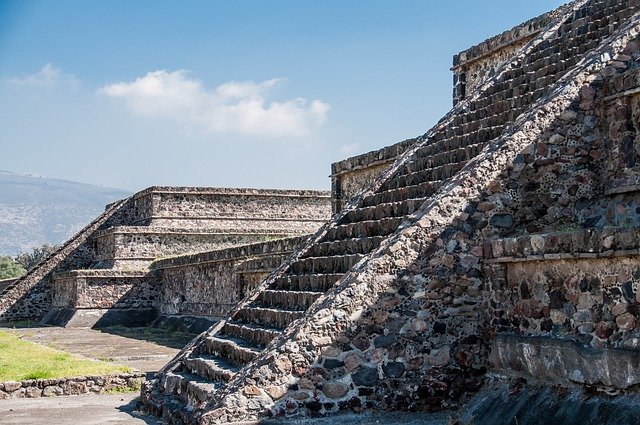
The inner courtyard could hold about 100,000 people. This perfectly fortified place was built in case the city was besieged. Teotihuacan became a religious center and sacred city for the Aztecs. The main building of this temple complex was the Aztecs’ sanctuary to their deity Quetzalcoatl. They believed that he was the creator of all things, the patron of the earth and fertility. The six levels of the temple are lavishly decorated with carved bas-reliefs and sculptures of dragons. At the top of the pyramid leads a staircase with precisely 365 steps, as the days of the year.
The first archaeological excavations in the ancient city were conducted by the Spaniards back in the 17th century. The project included the restoration of the Pyramid of the Sun. The next time such activities were carried out in the 20s of the 20th century by Manuel Gamio. Later there were excavations in the ’40s and ’50s. At that time, scientists were already wondering who built Teotihuacan, who were its first inhabitants and where, and most importantly, why did they leave?
Although the city has been studied extensively by archaeologists, there is very little information about it. Scientists estimate that 100 to 200 thousand people populated Teotihuacan. This is a considerable number of people for that time and suggests that it was a vast city, especially its time.
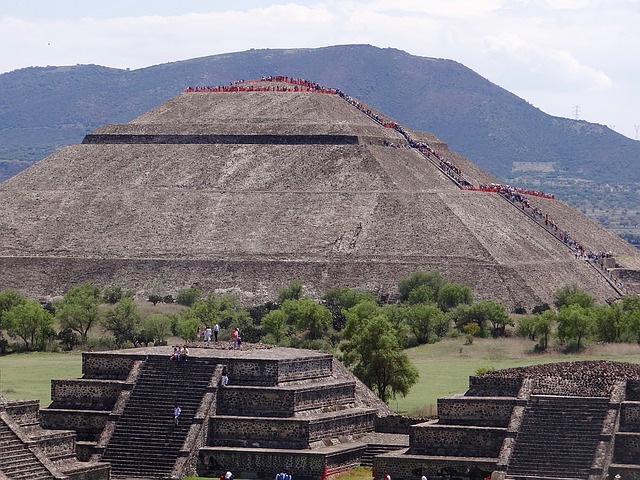
It was a settlement with a very well-organized structure. Researchers believe that multi-ethnic nobles ruled the city. They lived in beautiful spacious two-storied houses. The walls of the homes were luxuriously decorated with perfectly preserved frescos. The town was perfectly planned, with a regular street network intersecting with the main avenue at right angles.
The Aztecs named the central avenue. They thought the buildings along the Road of the Dead were sacrificial altars. They were just dwellings of residents, as scientists later found out. The adobe buildings, where the lowly townspeople lived, were close together. They formed blocks with narrow streets.
They were one-story buildings with flat roofs, and the only source of light and air in them were doors. The outside of the structure served as a barrier against the city’s street noise. The house was excellent during the day and warm at night. Each house had its altar in the courtyard, indicating the extreme religiosity of the city’s inhabitants.
All of the main buildings were built of some cobblestones and smoothly hewn, perfectly rectangular stones. Modern researchers still wonder what a unachievably high level of technology was at that time. It now seems unreal to produce such bricks with the tools of the period. There are no traces even of a hammer and chisel on the stones.
Some scholars believe that they were saws of some kind, perhaps diamond saws. To build such buildings, and they were all built simultaneously, requires a tremendous amount of building materials and the labor of many thousands of people. All this speaks volumes about how powerful and wealthy this ancient mysterious state was.
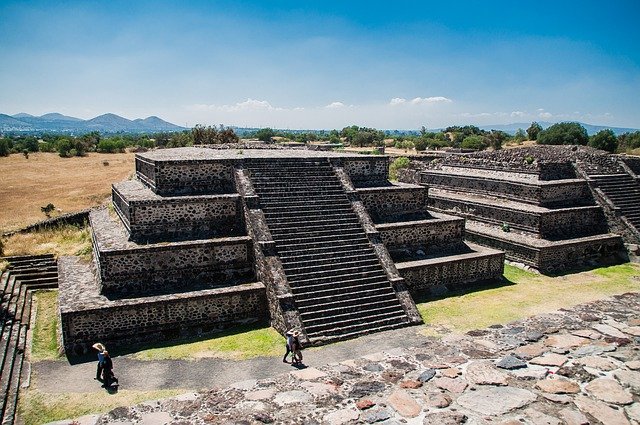
Except for the craft technologies, the ancient builders had a profound knowledge of astronomy and mathematics. According to the scientists’ opinion, the Pyramid of the Sun was built with the help of calculations involving the number “Pi.” It is hard to comprehend, but it is true. This pyramid is the third-largest globally; it is slightly inferior in size to the Cheops pyramid. It was built around 150 AD. The building was a five-tiered structure with a supposedly wooden temple on top. What were its appearance and purpose is still a mystery to scientists.
The researchers have found a cave under the temple, which is 100 meters wide and about six meters deep. At first, the scientists thought that the cave was of natural origin, but further study disproved this theory. The cave was artificially created by human hands and probably served as a tomb for the city’s rulers. The Aztecs gave it its name, who discovered that, exactly twice a year, on April 29 and August 12, the sun, being at its zenith, hovers directly over the top. From the top of this monumental structure, you have a stunning view of the entire majestic ancient city.
The second-largest building in Teotihuacan is the Pyramid of the Moon. In the square in front of this temple are ten other smaller ones. Here the local priests probably held religious meetings, processions, and ceremonies. At first glance, it may seem that the two temples of the Moon and the Sun are the same. This is far from it, purely a visual effect.
Inside the building, archaeologists found the remains of twelve human bodies. All of the people had their hands tied behind their backs. Ten bodies had been decapitated and left in a mess in the middle of the burial hall. One theory is that they were enemies of the people of the city. The two remaining ones were very richly dressed, with expensive jewelry, and were planted neatly. They wore various insignia indicating their high position in society, the local elite.
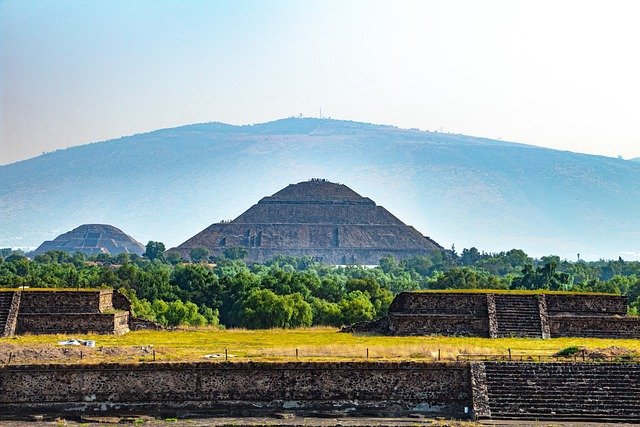
Archaeologists discovered in 2003 under the Temple of the Feathered Serpent a deep long underground tunnel that leads to the Pyramid of the Sun. Excavations there found various cult objects in great numbers and jewels. Archaeological excavations are still underway—the goal of scientists: to discover the burial place of the rulers of Teotihuacan.
For many centuries, this ancient city was the sun around which all life in the empire revolved. One day the inhabitants, for reasons still unknown, abandoned it. Teotihuacan was subjugated by almost all the nations surrounding it. Between the 7th and 8th centuries, the city suffered destruction. Its tombs were looted, and its magnificent sculptures were destroyed. Until now, scholars are still arguing what caused it: an invasion of unknown invaders, some natural cataclysm, or an epidemic. The absence of numerous human remains allows us to propose that the inhabitants abandoned the city and left. The main questions are: why, and most importantly, where did they go?
Teotihuacan was empty for nearly seven centuries before the Aztecs found it and began to live in it. In the 16th century, after the Spanish conquistadors invaded, the city was abandoned again. The town looks majestic but is only a shadow of its former beauty and power.


